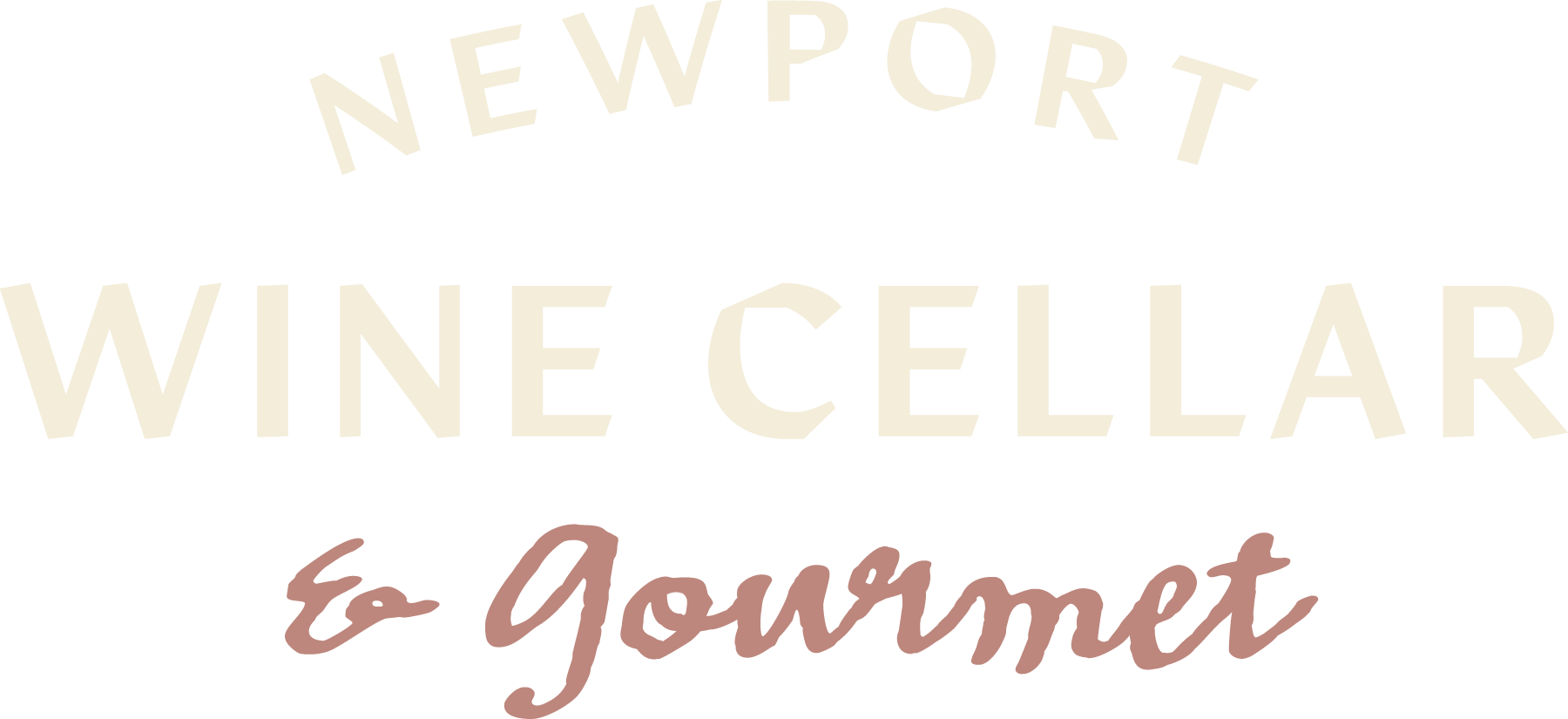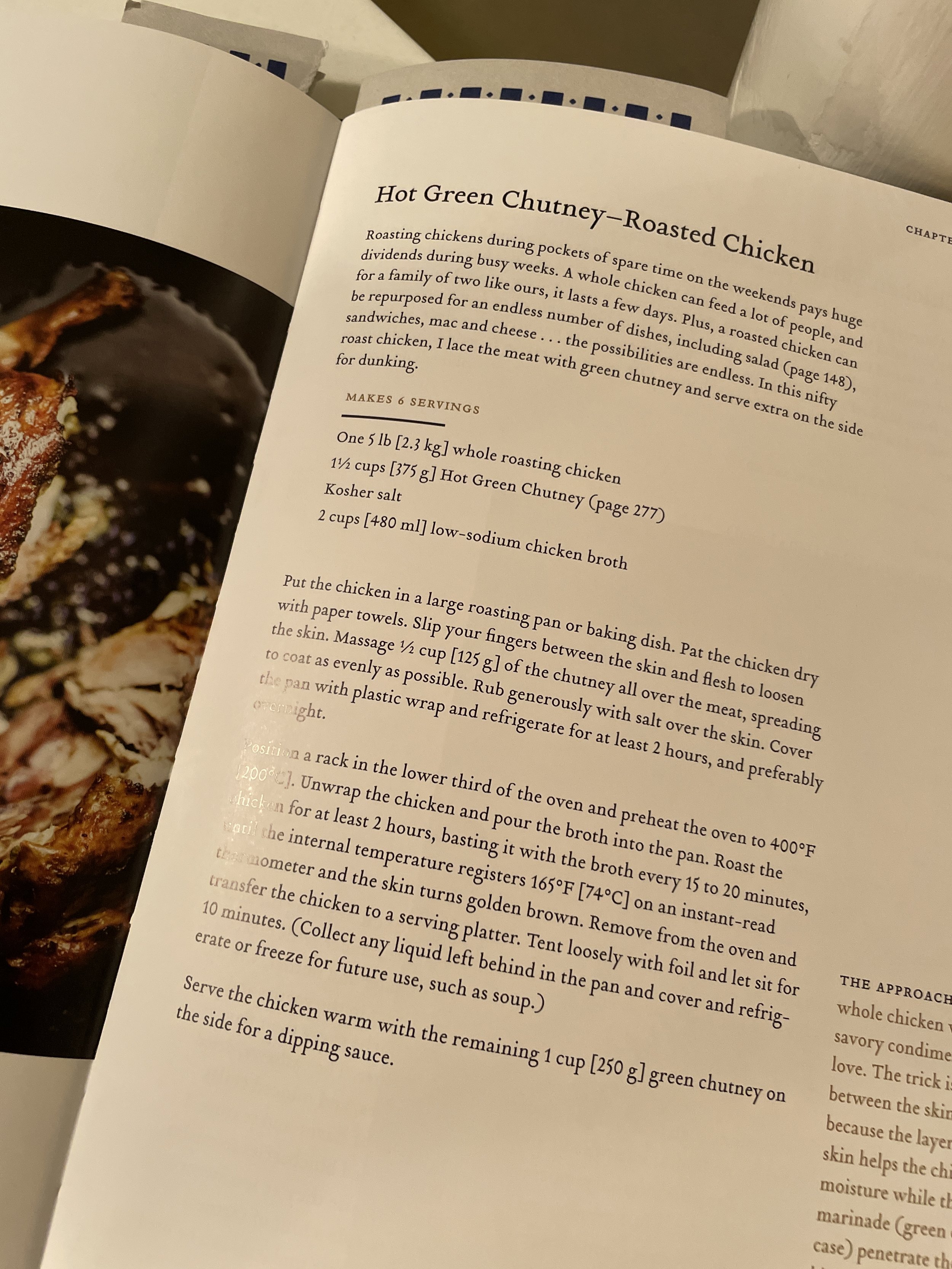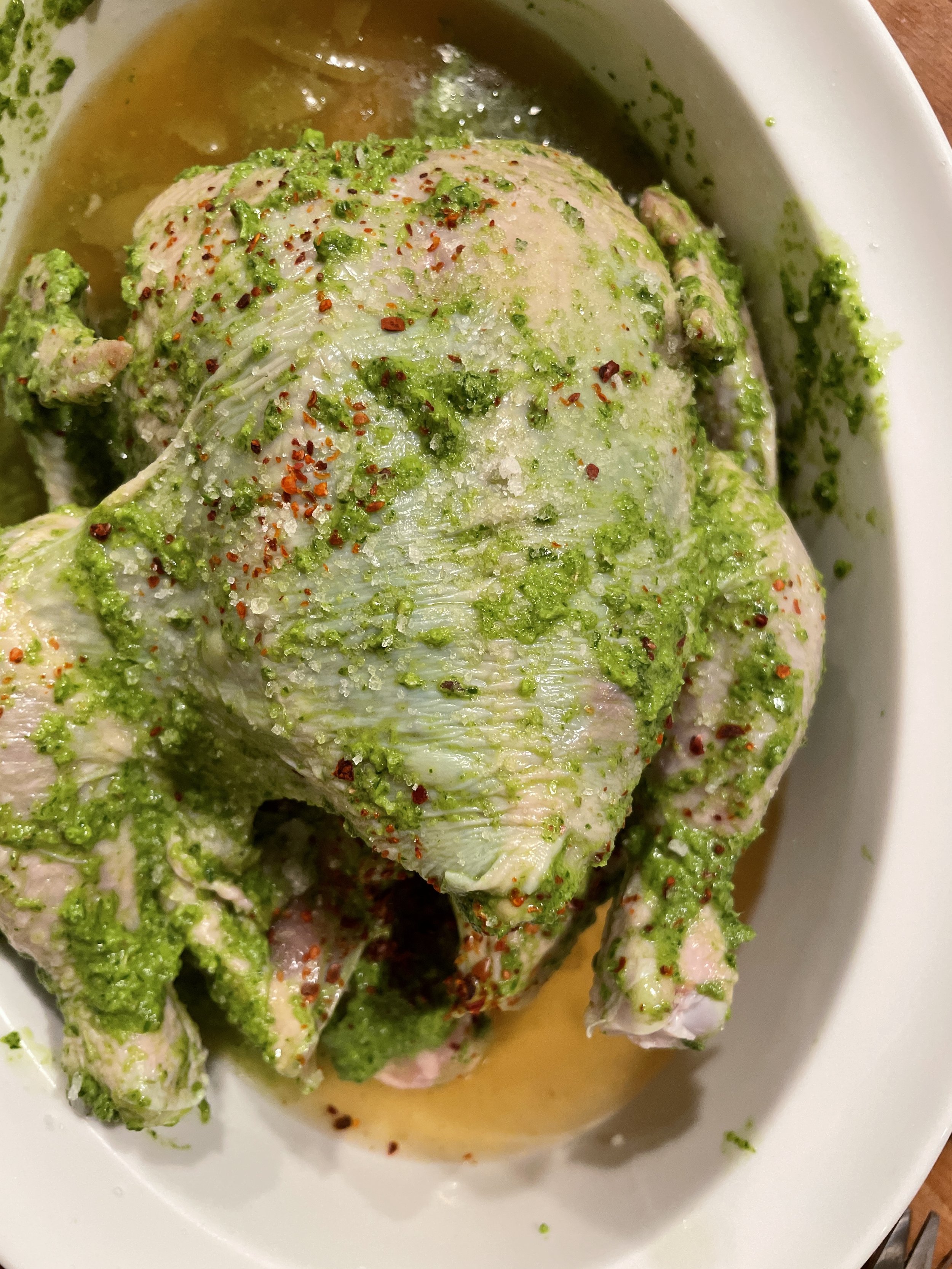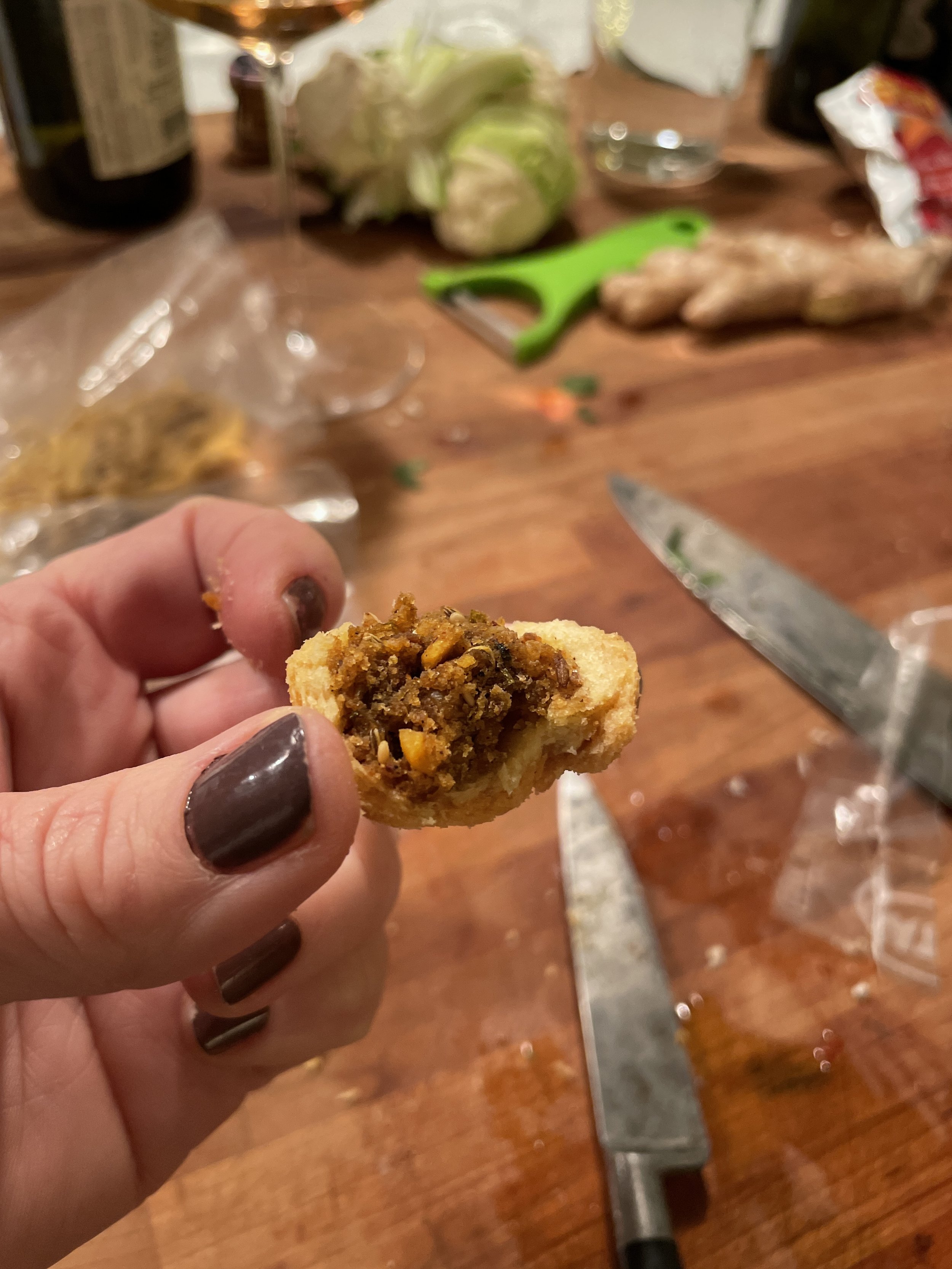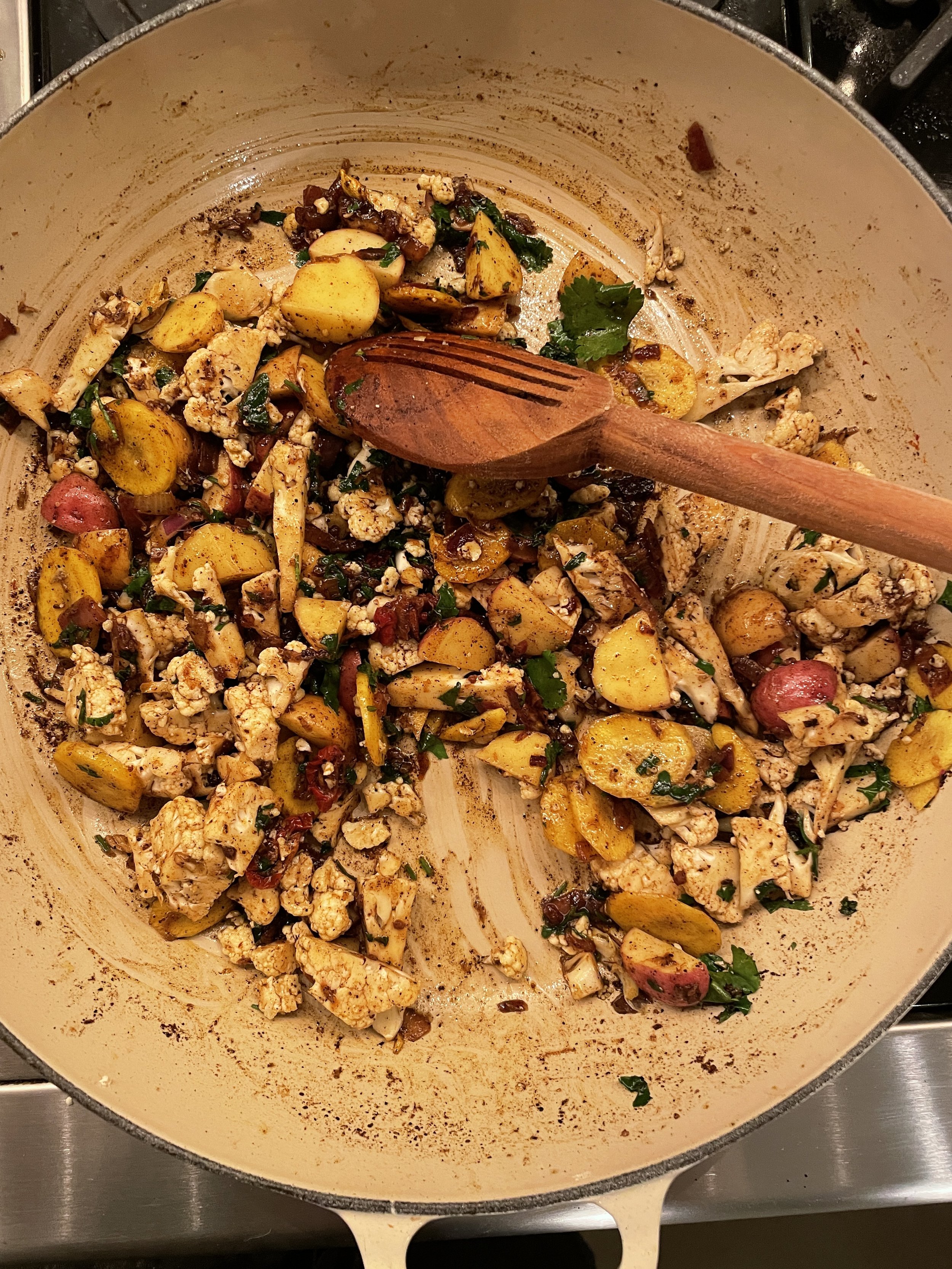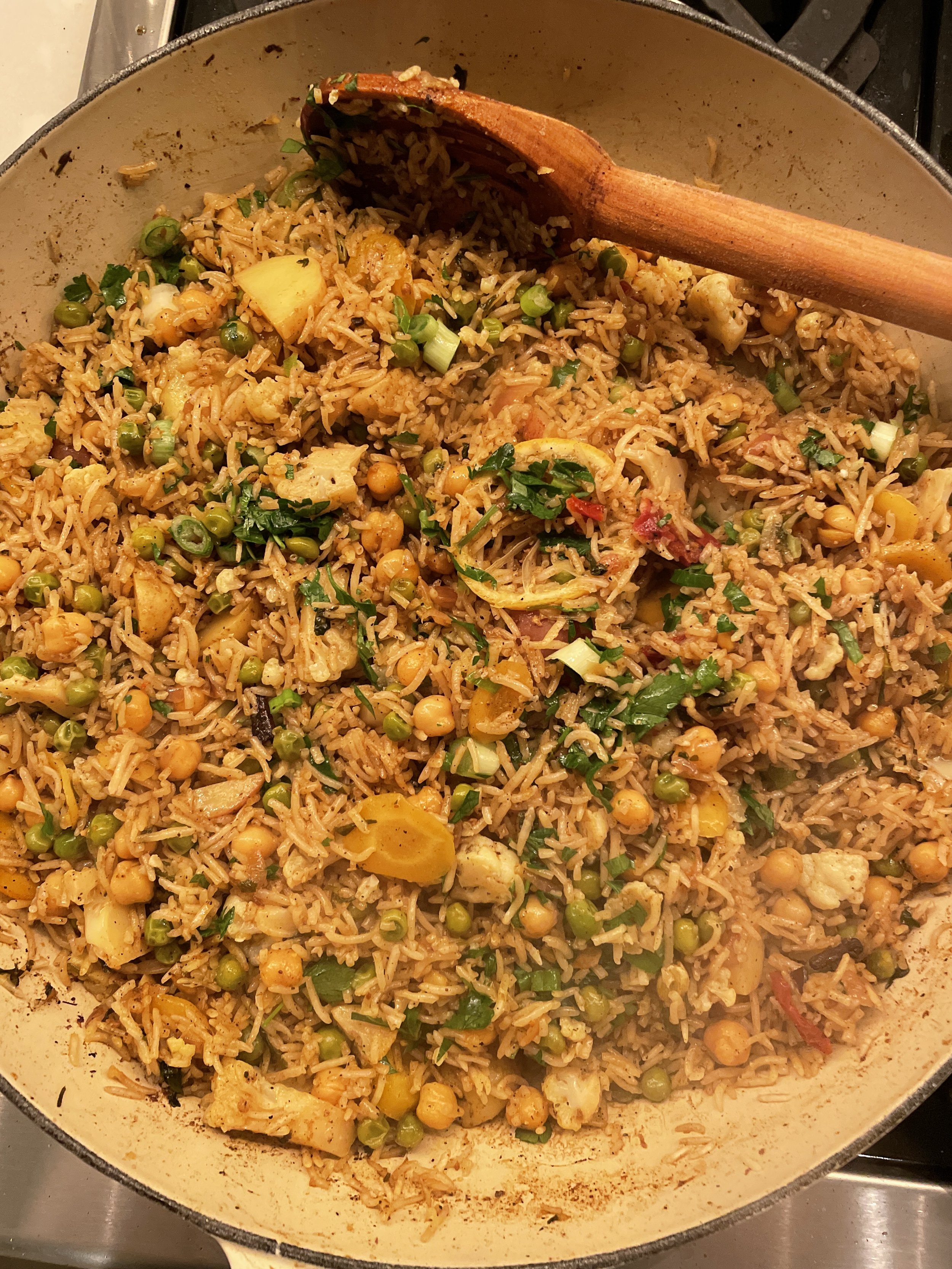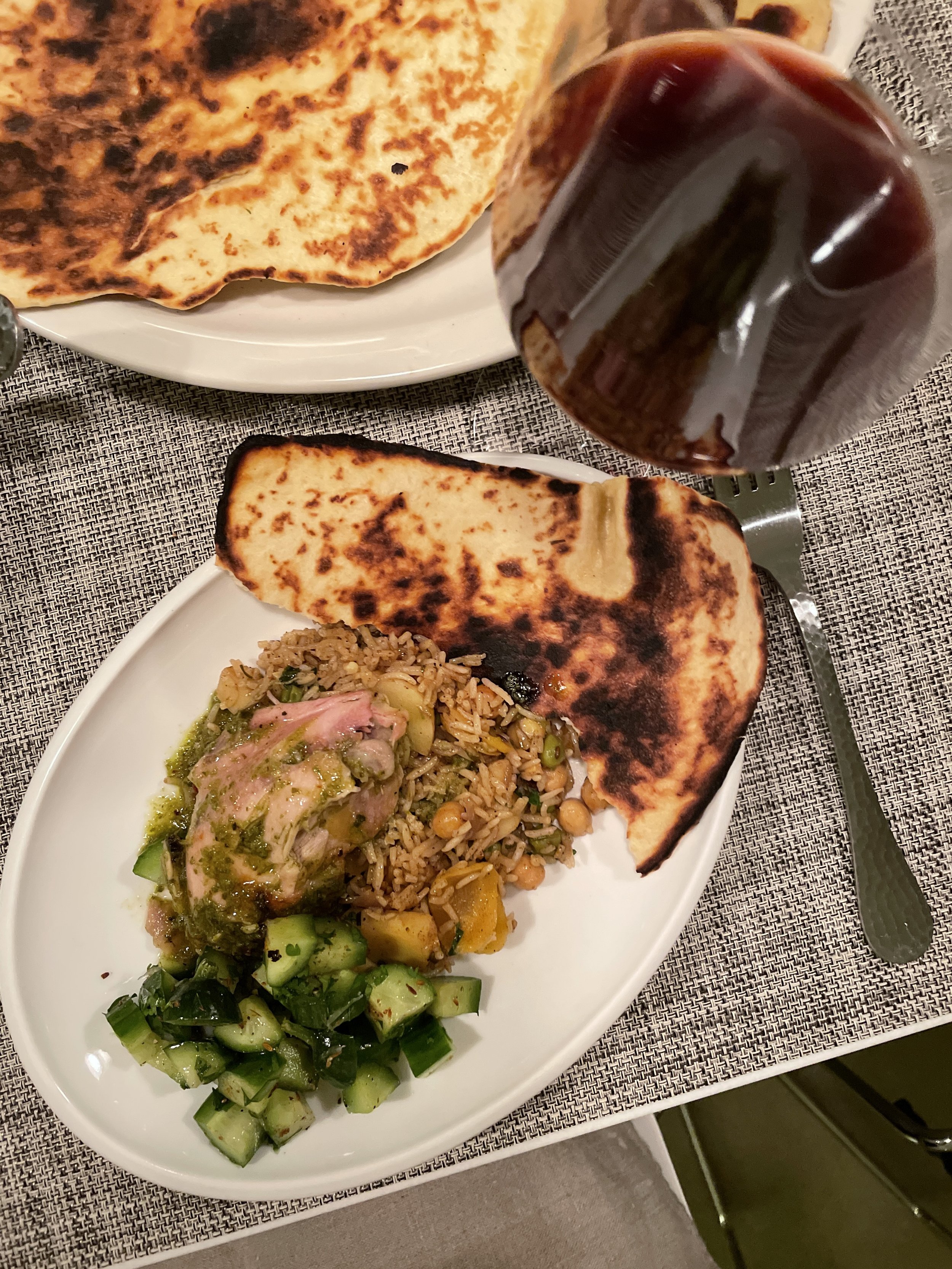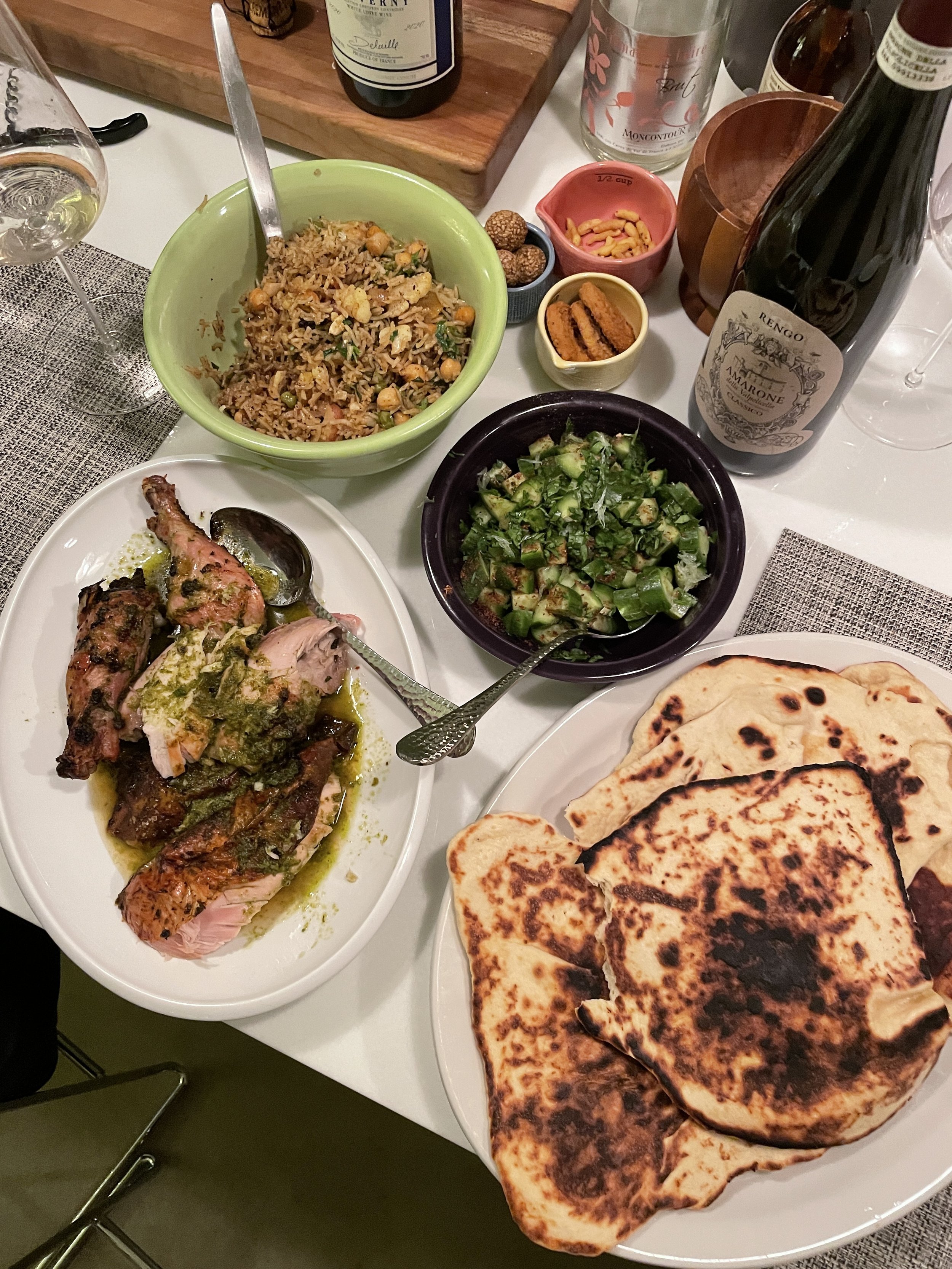Most often I learn from reading. Books have taken me beyond for as long as I can remember. Sometimes that place is physical, but more often it is metaphorical and intellectual or philosophical. That said, more often than not, that book is prompted by people introducing me to something or someplace new, the book then takes me there. This past week, I went to India.
A friend gave Steven and I a bag full of spices and treats from her recent trip home to India for her wedding. She graciously shared armloads of spice packets, mysterious crackers, sweets sesame rounds, and other treats. I laid all this material on the table and loved the sight of new colors, the smells of curious spices, and the crinkle of cellophane bags filled with mystery. I was excited, but honestly, I did not have a clue what to do with any of it. “What is this?” I asked my partner, holding a foil wrapped ball the size of a golf ball, and he looked at me with the very same wonderment and shrugged, laughing. “I thought you might know,” he said with that wonderful sparkle in his eye that suggests that I am much better in his mind than I am in real life (I am grateful for that).
I appreciate the faith that he has in me, but this cook and wine lady has some limitations. I love Indian food and indulge as often as the opportunity allows, but I have never cooked it. In fact, I have not even considered cooking it, until Hetali gave us this gift. Now, I had to, and I love a challenge.
Naturally, I went to the bookstore. Kitchen Arts & Letters is my resource for cookbooks, essays on food and wine, and friendly advice on the intersections of the literary and the culinary. If you have not visited the store (in person or online), I suggest you stop reading and do it right now! They never let me down. As luck would have it, the only other people in the store were also shopping for Indian cookbooks, and they shared some advice about which books they enjoyed. They were experienced Indian cooks, so when they left, I was a little overwhelmed with several books in front of me, all with beautiful photographs of India, stunning dishes that made my mouth water, but also long, complicated recipes with lengthy ingredient lists, much I had never used before. I sighed.
Michael, who knows every book in the store, walked over and handed me Season: Big Flavors, Beautiful Food, by Nik Sharma. His advice was sound. The book is filled with stunning recipes that are spiced with Indian flavors applied to more Western foods, and the recipes were roughly 6-8 ingredients. This is my sweet spot. I like to cook, not build an erector set. I commend those more ambitious than I, but I gotta eat!
The book gives you just the right amount of guidance to cook naturally. The recipes are simple enough to modify as you go. This style of cooking appeals to my culinary approach, even my lifestyle, in a more general sense. I don’t like directions or controls, measurements, deadlines, unless I set them. Yes, I am Capricorn, born on the cusp of Sagittarius, which explains why the journey is more important than the destination.
I had so much fun experimenting with the spice packets and snacking on the mysterious treats. I love the first bite of something that you have no idea what to expect. I began with the golf ball sized snack. I don’t even know what to call it—treat, sweet, salty, cookie, cracker...what is it??? I unwrap it, it looks like a pastry, but it is firm to the touch. I turn it around, but that reveals nothing. I smell it, and it smells of spice, cinnamon, honey, maybe dried fruit. I am unsure, so I cut it in half, rather than biting. I need to see more before I taste it. To my delight the center is a beautiful rich crumble of spice, fruit and nuts. I would liken it to a Sicilian stuffed cookie. I bite in, eyes wide, looking at my friend Stephanie with a childlike excitement. I am not sure what I thought might happen. First response, “wow, this is weird.” Quickly, we were both chewing away, smiling, and admitting that we really liked it. There is a very subtle sweetness to it, maybe a drop of honey or something similar. The cinnamon and cardamon are the most obvious spices, but there are other flavors. The pastry on the outside is like a cookie dough that holds it all together. The others were equally fun, and ultimately, I think they are a nice addition to dinner, or would make for great cocktail snacks, which is what we did since it took a while for me to cook everything.
I prepared four things—vegetable Biryani, Roasted Chicken with Spicey Green Chutney, Cucumber Cumin Salad, and Naan. Nothing was particularly difficult, and I was very pleased with the result. What was most fun was the new sensory experiences—new aromas in my kitchen that were inviting and exciting, new and compelling dishes that looked amazing, and then the new flavors that really excited me. I surprised myself—it was so good!
The other fun we had was experimenting with wines to pair with the flavors of Indian spices. Not surprising, wine and Indian foods are easy to pair. Spice, a little heat, fresh herbs are the flavors we are dealing with, and those all like fruity wines. The meal is relatively low in fat but has some acidity—lots of lime juice (well, full disclosure, a little clarified butter). I decided to try a sparking rosé, a white, and a red, but more specifically, I was seeking fruity.
To begin, let’s get at a shared notion of what that means. Fruity does not mean sweet, but it does mean that most prominent characteristic is fruit. When I think about wine, I break it down to its parts—flavor, acidity, tannins, alcohol. These must be in balance with one another. When I refer to fruitiness, it means two things: first, that the acidity and tannins are lighter than the flavor component, though still in balance; and second, that the most prominent flavors are fruit, as opposed to earth, spice, herbs, etc. What people often hear when I say fruity is sweet. Fruity is not a sweet wine, though it may be a little less complex. I could also use juicy, as a description, and I have even had people use “grapey” synonymously.
With foods that have a lot of heat and spice, I find that fruity serves to compliment the flavors and also contrast them. I don’t want to add more spice, or herbs, or additional flavors that will over complicate the combination. With Indian there is a lot going on. There are lots of options, but as it was just three of us, we stuck to three different wines. First the NC Moncontour Crémant de Loire, a sparkling wine of Cabernet Franc and Chenin Blanc. It has abundant red fruits like strawberry and red currant, a soft bubble that makes it very refreshing, and it works well with the Indian spices and flavors. It added a nice soft fruitiness and cleansed the palate. Then we tried the 2020 Domaine Salvard Cheverny, and it too offered a great balance with the foods. The blend of Chardonnay and Sauvignon Blanc fermented in stainless was lean, fresh, and bright. It has a burst of fruit at the onset, more green fruit and citrus, and it was really the star of the night. The final was a red, and truth be told I did not think this was going to work as well as it did. My dear friend, Stephanie, bought this one from me at event at which we met for the first time now twelve years ago, and she was saving it for and thought to bring it along to dinner. The 2006 Rengo Amarone de la Valpolicella is big wine with a lot of character and complexity. It has loads of dark red and black fruit, earthy flavors and even some spice of its own. The tannins had softened and the abundant fruit gave balance to its acidity. It was lovely, albeit a very big wine, and it worked wonderfully with the food, particularly the chicken with spice green chutney.
As far as a big take away, drink what you like because there are no easy rules and gather with people you love, and everything will taste better! I enjoyed this journey, so many thanks to Hetali for the spices and treats. I am excited to try more recipes and be taken beyond myself to new worlds.
I hope this inspires you to eat, drink, and think.
Cheers,
Maria
